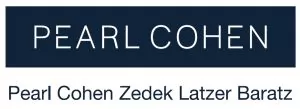In a precedential ruling, the U.S. Court of Appeals for the Federal Circuit held that a party joining and inter partes review proceeding pursuant to 35 U.S.C. § 315(c) was not statutorily estopped from challenging, in a subsequent district court proceeding, the asserted patent claims based on prior art not raised in the IPR and which could not have reasonably been raised by the joined party. In Network-1 Technologies, Inc. v. Hewlett-Packard Co., et al., Appeal No. 2018-2338 (September 24, 2020), the Court vacated the district court's grant of judgment as a matter of law (JMOL) to Network-1 on patent validity, remanding the issue. (The Court also affirmed-in-part, reversed-in-part and remanded the district court's claim construction, and affirmed the district court's district court's decision on Hewlett-Packard's ("HP's") argument that Network-1 improperly broadened one of the claims of the asserted patent during reexamination. Those rulings are not addressed in this article.)
By way of background, the asserted patent was reexamined twice in the U.S. Patent and Trademark Office ("PTO"), concurrent with the underlying district court action. The first reexamination confirmed the patentability of three pending claims and resulted in the issuance of fourteen additional claims. The second reexamination confirmed the patentability of two of the original claims and all fourteen new claims.
Procedurally, after Network-1 filed its complaint in the district court, another defendant, Avaya Inc., petitioned for inter partes review (IPR) of the asserted patent. The district court stayed its proceedings pending IPR. The Patent Trial and Appeal Board partially instituted Avaya's petition on two grounds.
Subsequently, HP and other petitioners jointly filed an IPR petition and motion to join the Avaya IPR. HP's petition included grounds different from those that had already been instituted. The Board denied HP's re-quest. HP, with others, filed a second IPR petition and motion to join the Avaya IPR, this time including only the grounds already instituted. The Board granted HP's request, and HP was joined as a party to the IPR.
At the time that HP filed its second petition, more than one year had passed since the district court complaint had been served. HP thus was time-barred under 35 U.S.C. § 315(b) from having its own petition instituted. However, because § 315(b) creates an exception from the time bar for joinder under § 315(c), HP was able to join.
In a final written decision, the Board held that neither challenged claim was unpatentable over the instituted grounds and the Federal Circuit affirmed.
The district court eventually continued the underlying suit, issuing a construction of two disputed claim terms and denying HP's summary judgment motion that argued one of the claims was impermissibly broadened through the earlier reexamination.
Following a jury trial and verdict (finding that HP did not infringe any asserted claim and that HP had shown that all asserted claims were invalid), Network-1 filed a new trial motion on infringement and moved for JMOL and a new trial on validity. The district court denied Network-1's infringement motion but granted its motion for JMOL on validity. The district court concluded that because of HP's joinder to the Avaya IPR, HP should have been estopped under 35 U.S.C. § 315(e) from raising the remaining obviousness challenges, which, per the district court, "reasonably could have been raised" in the Avaya IPR. The district court did not conditionally rule on HP's motion for a new trial with respect to validity.
On HP's cross-appeal, the Court agreed with HP that district court erroneously granted JMOL with respect to the '930 patent's validity based on its determination that HP was estopped from presenting obviousness challenges as a consequence of its joinder to the Avaya IPR.
The district court had concluded that, as a result of HP's joinder to the Avaya IPR, HP was estopped under 35 U.S.C. § 315(e) from raising obviousness challenges not based on a system ("the Fisher system"), which, per the district court, was not a patent or printed publication that HP "reasonably could have raised" in the IPR. Per the district court, HP could have reasonably raised its remaining invalidity arguments during the IPR, specifically rejecting HP's argument that it could not have raised new grounds in the IPR because it was a joined party. The district court stated that allowing HP to raise arguments "that it elected not to raise during the IPR would give it a second bite at the apple and allow it to reap the benefits of the IPR without the downside of meaningful estoppel."
The Federal Circuit agreed with HP that the district court misapplied the estoppel provision under § 315(e)(2), and that no validity ground that HP raised at trial "reasonably could have [been] raised" through its joinder to the Avaya IPR. The Court noted that § 315(c), the joinder provision, does not permit a joining party to bring into the proceeding new grounds that were not already instituted.
Referring to the provision related to district court proceedings, § 315(e)(2), the Court noted that, per the statute, a party is only estopped from challenging claims in the final written decision based on grounds that it "raised or reasonably could have raised" during the IPR. "Because a joining party cannot bring with it grounds other than those already instituted, that party is not statutorily estopped from raising other invalidity grounds."
The Court found that HP was able to join the ongoing on the two grounds already instituted and that, following the Board's final written decision HP, as a petitioner in the proceeding, was statutorily estopped from raising invalidity grounds based on those grounds in a district court action. The Court held, however, that HP was not estopped from raising other invalidity challenges against the challenged claims because, as a joining party, HP could not have raised with its joinder any additional invalidity challenges.
Accordingly, the Court concluded that HP was not statutorily estopped under § 315(e) from challenging the asserted claims of the '930 patent based on patents and printed publications not raised in the Avaya IPR and which could not have reasonably been raised by HP, and vacated the district court's JMOL decision on validity with respect to estoppel.
The content of this article is intended to provide a general guide to the subject matter. Specialist advice should be sought about your specific circumstances.

